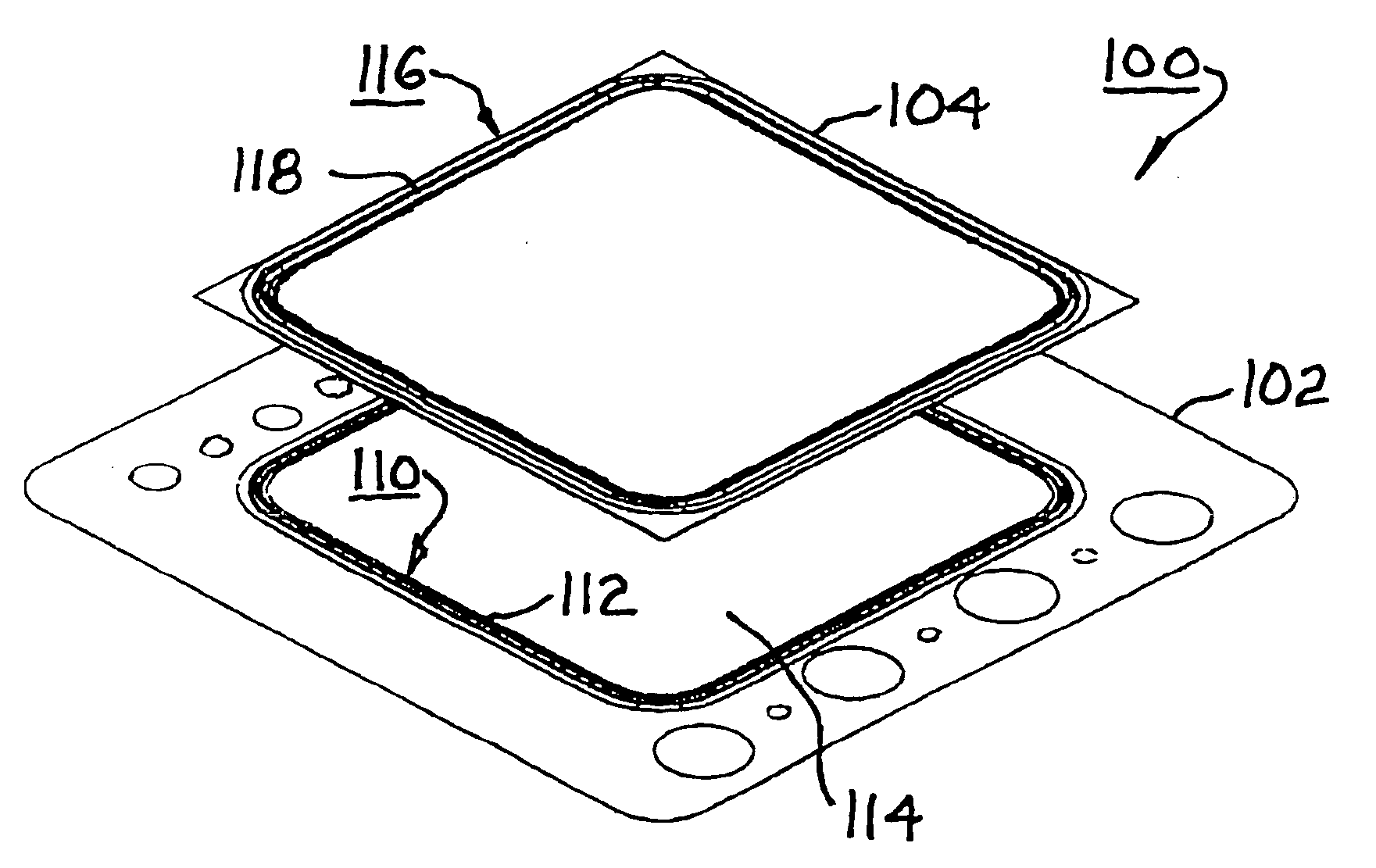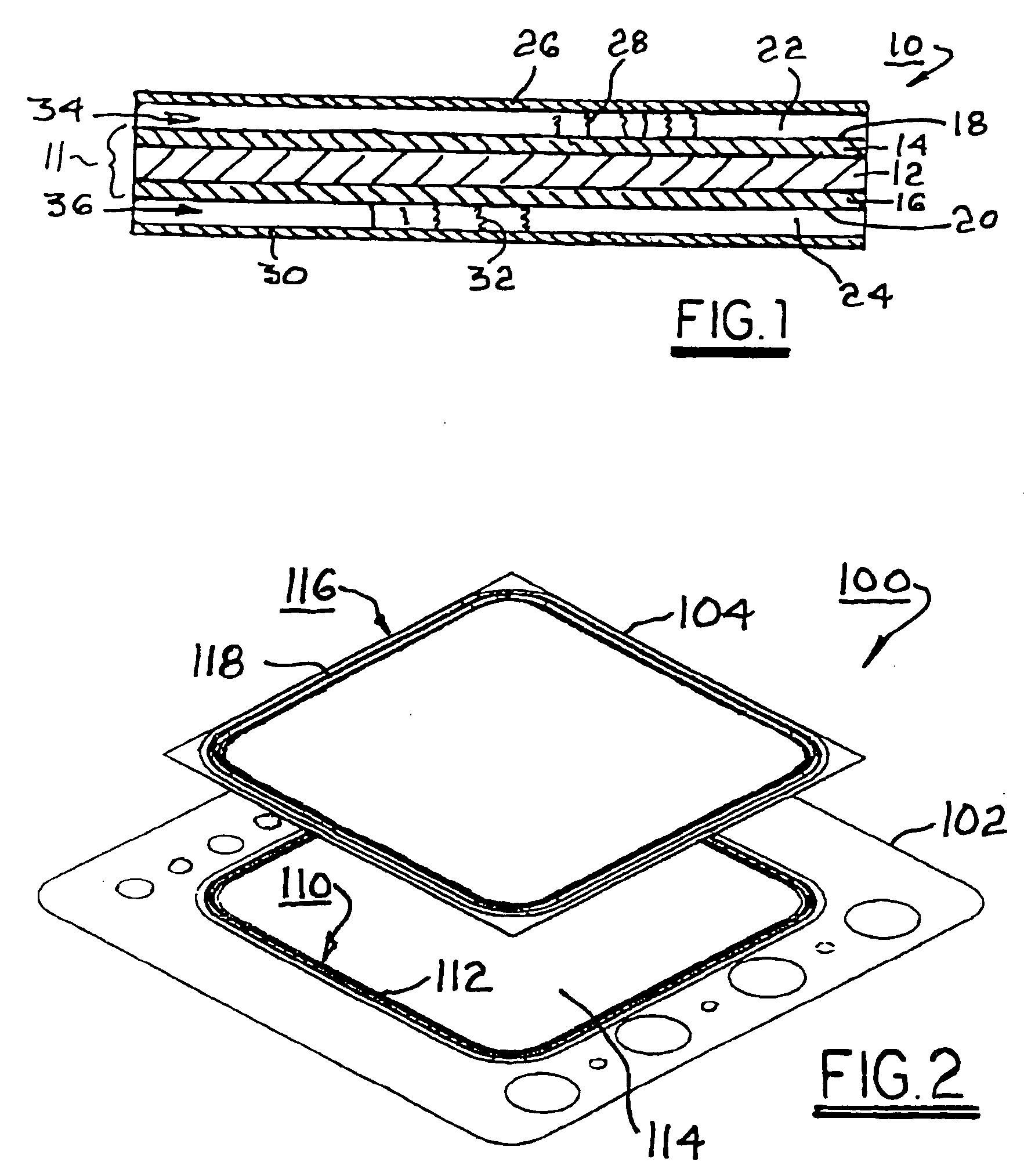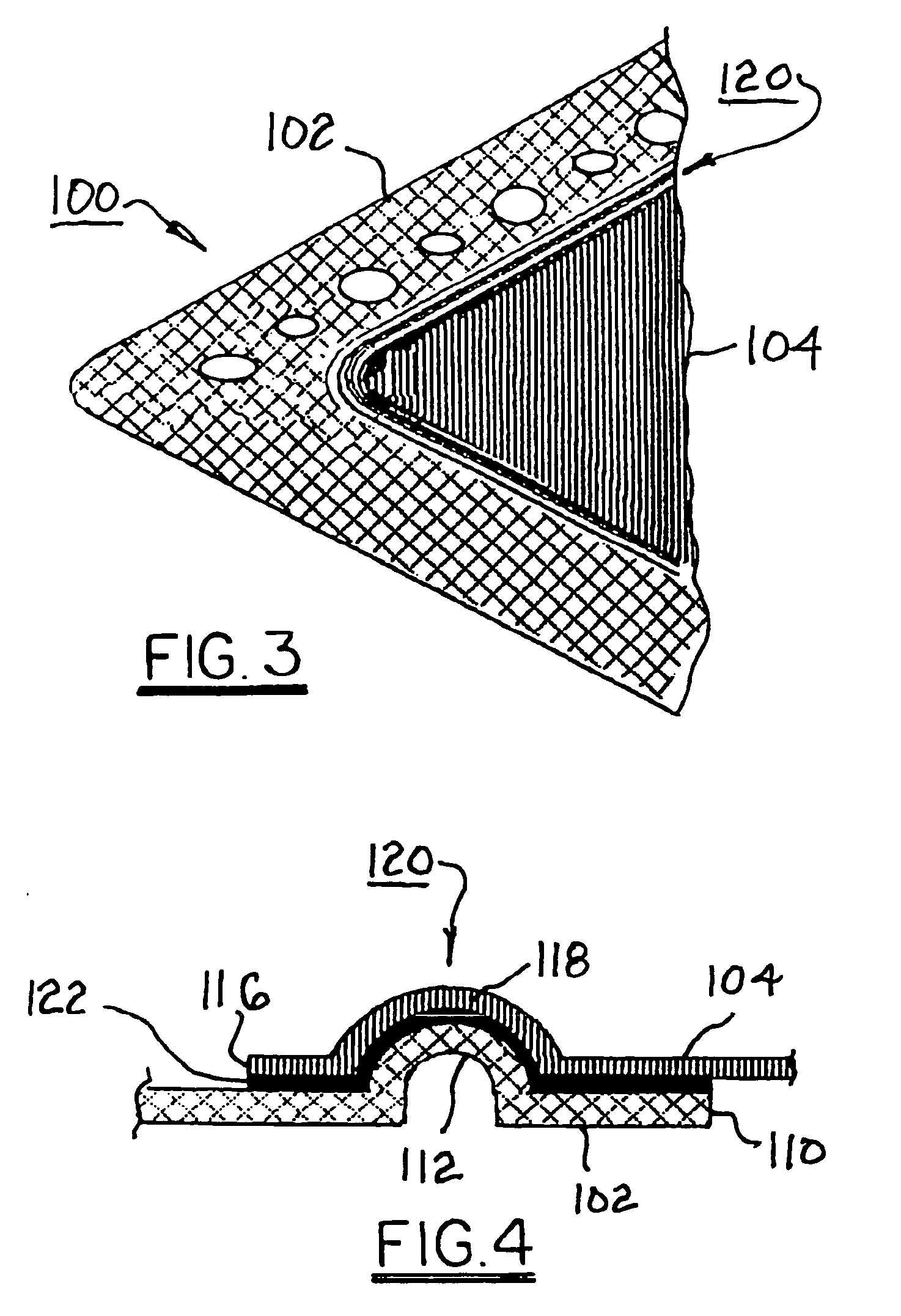Hybrid interconnect for a solid-oxide fuel cell stack
a fuel cell and hybrid technology, applied in the field of fuel cells, can solve the problems of relatively rapid oxidation of ferrritic stainless steel, and achieve the effects of reducing thermal expansion differences, reducing thermal stress, and reducing the ability of the joint to withstand multiple thermal cycles
- Summary
- Abstract
- Description
- Claims
- Application Information
AI Technical Summary
Benefits of technology
Problems solved by technology
Method used
Image
Examples
Embodiment Construction
[0015] Referring to FIG. 1, a portion of a fuel cell subassembly 10 includes structural and electrochemical elements known in the art of solid-oxide fuel cells. The example shown is of a class of such fuel cells said to be “anode-supported” in that the anode is a structural element having the electrolyte and cathode deposited upon it. Thus, element thicknesses as shown in FIGS. 1 and 2 are not to scale. A complete fuel cell stack assembly includes fuel cell subassemblies electrically connected, in series.
[0016] In the portion of fuel cell subassembly 10 shown in FIG. 1, each fuel cell subassembly includes an electrode 11 having an electrolyte element 12 separating an anodic element (anode) 14 and a cathodic element (cathode) 16. The electrolyte element preferably is formed of a ceramic oxide and preferably includes zirconia stabilized with yttrium oxide (yttria), known in the art as YSZ. The cathode is formed of, for example, porous lanthanum strontium manganate or lanthanum stront...
PUM
| Property | Measurement | Unit |
|---|---|---|
| temperatures | aaaaa | aaaaa |
| coefficient of thermal expansion | aaaaa | aaaaa |
| resistant to corrosion | aaaaa | aaaaa |
Abstract
Description
Claims
Application Information
 Login to View More
Login to View More - R&D
- Intellectual Property
- Life Sciences
- Materials
- Tech Scout
- Unparalleled Data Quality
- Higher Quality Content
- 60% Fewer Hallucinations
Browse by: Latest US Patents, China's latest patents, Technical Efficacy Thesaurus, Application Domain, Technology Topic, Popular Technical Reports.
© 2025 PatSnap. All rights reserved.Legal|Privacy policy|Modern Slavery Act Transparency Statement|Sitemap|About US| Contact US: help@patsnap.com



